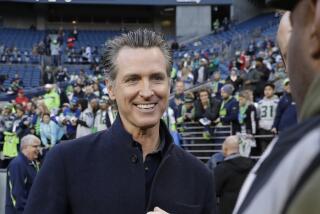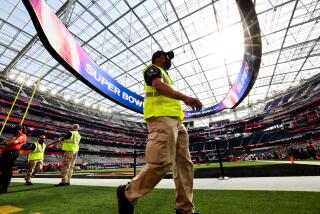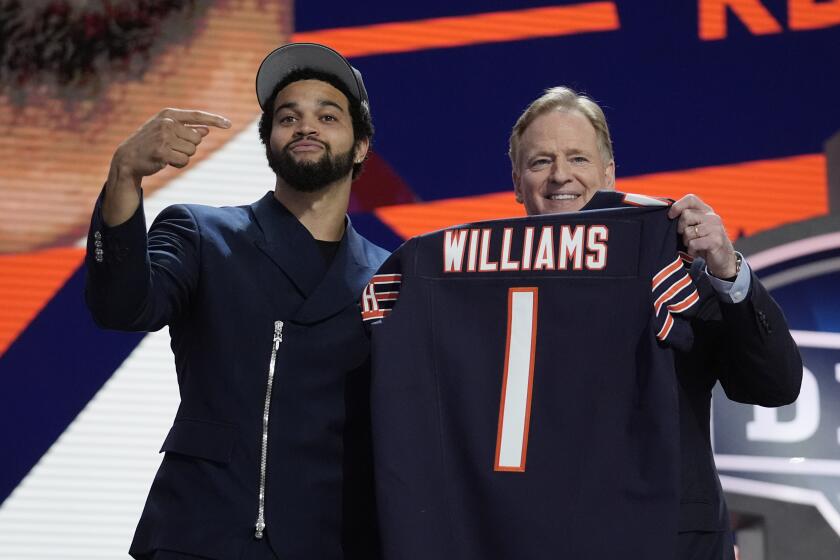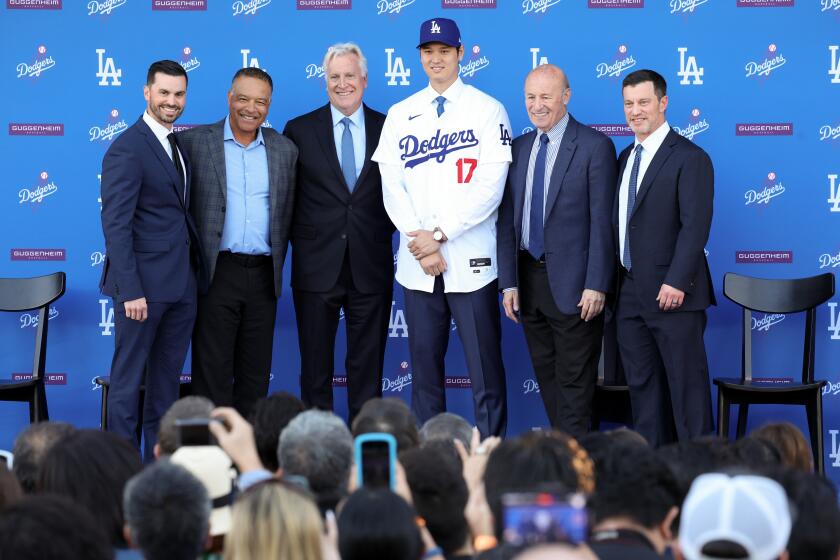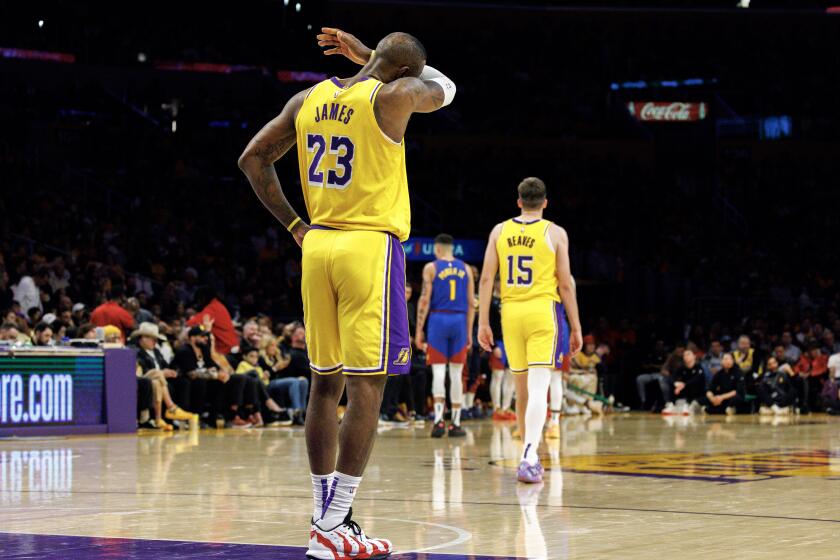NFL concussion settlement receives federal judge’s final OK

A judge has given final approval to a concussion settlement between the NFL and retired players.
The long-running litigation between the NFL and its retired players concluded Wednesday with a federal judge’s final approval of a settlement that the league said would provide “prompt and substantial benefits” to many of those suffering from concussion-related illnesses.
In a 132-page opinion filed in U.S. District Court in Philadelphia, Judge Anita Brody called the wide-ranging deal “fair, reasonable and adequate.”
Experts for the NFL and retired players project that about 6,000 of the estimated 20,000 living retirees — or nearly three in 10 ex-players — would be eligible for hundreds of millions of dollars in compensation over the deal’s 65-year term.
“Today’s decision powerfully underscores the fairness and propriety of this historic settlement,” said Jeff Pash, NFL executive vice president and general counsel.
The litigation, which started with a lawsuit against the NFL in Los Angeles Superior Court in July 2011, helped raise awareness about the long-term effect of head injuries suffered by some players during their careers. The case grew to more than 300 lawsuits that were consolidated in federal court.
That coincided with a national debate about football’s safety that included President Obama’s saying in 2013 that he would think “long and hard” about letting a child of his play the game and a Bloomberg Politics poll last fall that showed 50% of respondents don’t want their sons participating in football.
“I believe this case has saved the brains of many children involved in contact sports,” said Jason Luckasevic, the Pittsburgh lawyer who was part of the first lawsuit. “For that, I know the players are proud to have brought this public health epidemic to national attention.”
The agreement funds concussion research and education, provides baseline examinations for problems related to head injuries and compensates retired players who suffer from a variety of conditions, including Alzheimer’s disease and amyotrophic lateral sclerosis. Monetary awards will be determined by a grid that adjusts the amount based on a player’s seasons in the NFL, age at diagnosis and other criteria.
The maximum payout for a player with Alzheimer’s, for example, is $3.5 million. But the average payout for Alzheimer’s is expected to be $190,000 when age and experience are factored in.
Though there is no limit to what the NFL could pay out to the retired players, the individual awards are capped at amounts that range from $1.5 million for moderate dementia to $5 million for ALS.
About 140 retired players filed objections to the settlement last fall. It’s unclear whether any will appeal Brody’s decision.
“We are pleased that the settlement was substantially improved as a result of objections that we made,” said Steven F. Molo, lead attorney for seven retired players who opposed parts of the deal. “We are reviewing the court’s detailed opinion to determine where things go next.”
The U.S. District Court of Appeal in Philadelphia rejected an appeal last fall from the group. The court said that its challenge needed to wait until the settlement received final approval.
The group’s concerns included the settlement’s treatment of chronic traumatic encephalopathy. After April 22, the date of final approval, the families of retired players who receive a postmortem diagnosis of CTE won’t be compensated for the disease.
An appeal would delay any benefits until the matter is resolved, a process that the co-lead counsel for the plaintiffs said could take months or years.
“Despite the difficult health situations retired players face today and that many more will unfortunately face in the future, they can take comfort that this settlement’s benefits will be available soon, and will last for decades to come,” Christopher Seeger and Sol Weiss said in a statement.
The NFL and retired players first reached agreement on a settlement to the litigation in August 2013, then twice revised the deal at Brody’s insistence to remove a $675-million limit on awards to retired players and make other adjustments.
The deal covers all retired players or their estates — other than about 200 who opted out by last fall’s deadline — regardless of whether they sued the NFL. Current and future players aren’t included.
After the resolution of any appeals, there will be a 180-day period for retired players and their families — other than the 200 — to register for the deal. If they miss the deadline, they’ll be ineligible for payouts and are barred from ever suing the league over head injuries.
“The settlement,” Brody wrote in her opinion, “allows class members to choose certainty in light of the risks of litigation.”
Some, though, still don’t qualify.
The family of Pro Football Hall of Famer Mike Webster, who died in 2002 and became the first NFL player diagnosed with CTE, isn’t likely to receive a payout. The settlement cuts off compensation in most cases for players who died before 2006.
Luckasevic, who represents the Webster family, says he’s happy for the final approval but believes an opportunity was missed.
“There was so much more that could and should have been done on behalf of the retired players who suffer cognitive and behavioral disabilities,” he said.
Twitter: @nathanfenno
More to Read
Get our high school sports newsletter
Prep Rally is devoted to the SoCal high school sports experience, bringing you scores, stories and a behind-the-scenes look at what makes prep sports so popular.
You may occasionally receive promotional content from the Los Angeles Times.

